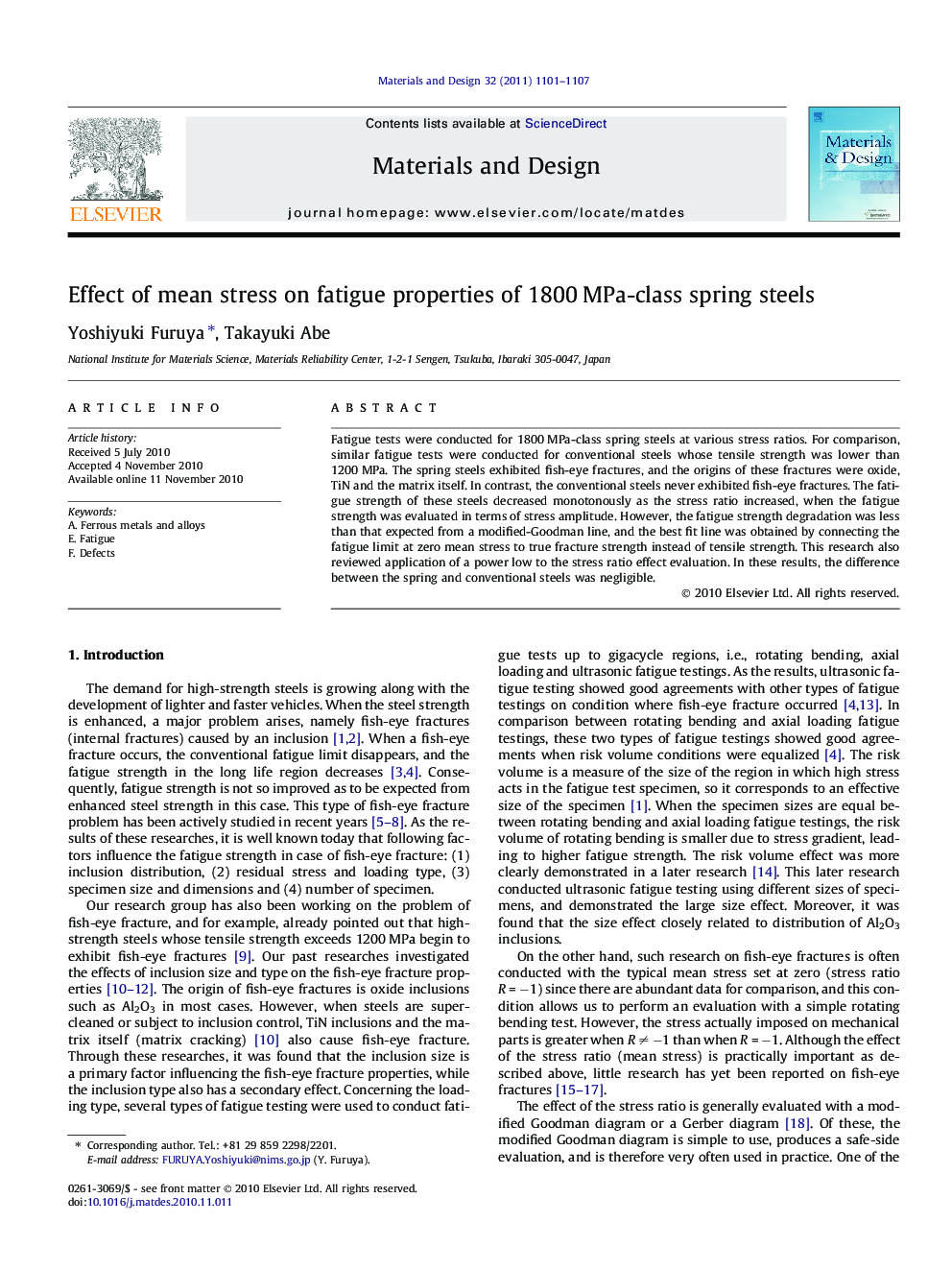| Article ID | Journal | Published Year | Pages | File Type |
|---|---|---|---|---|
| 831407 | Materials & Design (1980-2015) | 2011 | 7 Pages |
Fatigue tests were conducted for 1800 MPa-class spring steels at various stress ratios. For comparison, similar fatigue tests were conducted for conventional steels whose tensile strength was lower than 1200 MPa. The spring steels exhibited fish-eye fractures, and the origins of these fractures were oxide, TiN and the matrix itself. In contrast, the conventional steels never exhibited fish-eye fractures. The fatigue strength of these steels decreased monotonously as the stress ratio increased, when the fatigue strength was evaluated in terms of stress amplitude. However, the fatigue strength degradation was less than that expected from a modified-Goodman line, and the best fit line was obtained by connecting the fatigue limit at zero mean stress to true fracture strength instead of tensile strength. This research also reviewed application of a power low to the stress ratio effect evaluation. In these results, the difference between the spring and conventional steels was negligible.
Research highlights► Mean stress effects were investigated for steel exhibiting fish-eye fracture. ► Modified Goodman diagram produced safe-side predictions. ► Power low of a stress ratio also produced appropriate predictions. ► Fatigue strength was not decreased so much as in Ti–6Al–4V alloys at around R = 0. ► The mean stress effects can be evaluated by applying the conventional technique.
